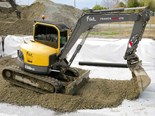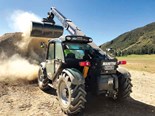Trucks and machinery in the US
Deals on Wheels reader and Wairarapa-based owner of JPS Earthmoving Ltd took a trip to the United States over the Christmas break and filed this report
My partner Nikki and I decided to spend Christmas with her family at Lake Charles, Louisiana. She was born in Wellington, New Zealand before her family moved across the Pacific to Indiana, located in the Midwestern and Great Lakes regions, where she spent her childhood.
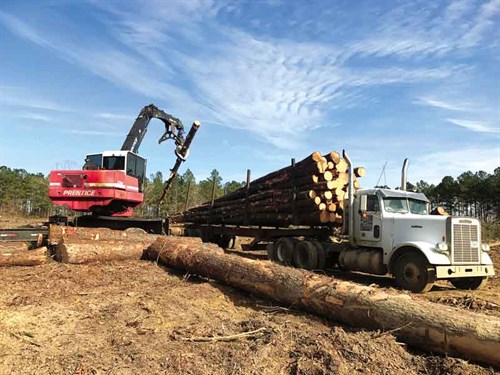
The family eventually moved from Indiana, shifting south to Lake Charles in late 2016, which is located around one hour north of the Gulf of Mexico. I met Nikki while she was in New Zealand visiting family on her O.E.
So after organising ourselves, I packed my bags, making sure I had the latest copy of Deals on Wheels close at hand to keep me entertained on the 23 hours of travelling we were about to endure.

Trucks in Texas
Arriving in Houston, Texas on 18 December, it wasn’t long after leaving the airport that I began to understand the size and scale of things stateside.
Driving down the eight-lane interstate from Texas to Lake Charles was an experience in itself. The number of trucks plying the tarmac was unbelievable. The speed limit there is 80mph, which is about 130kmh, but even travelling at the speed limit, it felt like we were driving in the slow lane, being constantly passed by 18-wheelers and what we would call utility vehicles, or utes. The trucks over there are very different to what I’ve been brought up with. Pretty much every single tractor unit has a massive sleeper cab on the back that could probably house a small family.
The laws on the road are also different. During my trip, I would sometimes see houses being moved along the interstate on the back of low loaders, with no pilots in front or behind. The trucks just had a ‘wide load’ sign and a small flashing hazard beacon for warning other road users.
The size of the trucks in the US is strange as well. You never seem to see the small-medium scale trucks, like eight-wheeler transporters, or even just your normal urban Hino or Isuzu puddle jumpers.
There were many Japanese truck brands over there with Hino being the brand I saw the most. Understandably, more recognisable on the roads were the American-made Peterbilts and Macks with their big bonnets out front, but interestingly similar to the US brands, I also noticed Hino produces a medium-sized model with a bonnet.
If any gear needed to be moved, it would usually be towed by a massive raised-up ute on the back of a two- or four-axle trailer connected via a fifth wheel. While that may seem strange to us, trust me, these were amazing. I even saw a Caterpillar D5 dozer getting towed around by a ute.
One thing I never saw during my entire trip was curtainsider trailers. All the trucks were just large reefer (as they call them) trailers with doors at the back. Hopefully, they will cotton on to the loading/unloading efficiency of curtainsiders one day. Getting on to the equipment over there, the one thing I can say is that everything is bigger. You appreciate the scale of things when you’re driving around and see large machines such as 50-tonne excavators clearing roadside drains or working on small projects.

As I got used to the area more, I began to explore around a bit, finding some gear working just around the corner from me. They had a few Kobelco and Komatsu excavators. Being a Hitachi owner and a fan of the brand, I didn’t get to see very many, as they are rebranded as John Deere in the US.
Exploring Louisiana
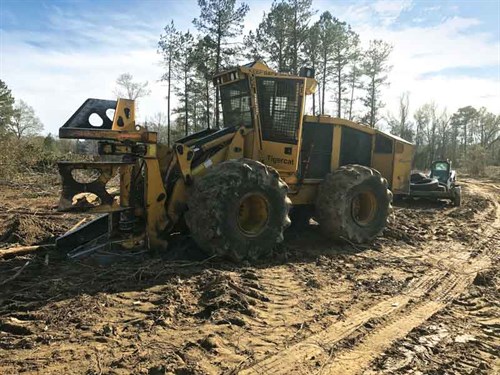
I went to a few sales yards around Louisiana and had mixed reactions from some of the salespeople. One thing that became quickly apparent is just how small the place makes you feel. A few companies were welcoming and interested in showing me around, and other times, people wouldn’t even give me the time of day—although the Kiwi accent probably didn’t help much.
I was lucky enough to get in contact with a logging crew working not far from where we were staying in Lake Charles, so one day, I went out with them. From what I saw, logging in New Zealand is completely different to the region I was visiting. Being a swampy area, there were no tracked excavators working in the felling areas. The processor was a wheeled feller-buncher that dropped the trees. A skidder dragged the entire tree to the loading platform, where it would be de-limbed and lifted onto a logging truck by a trailer-mounted loader.
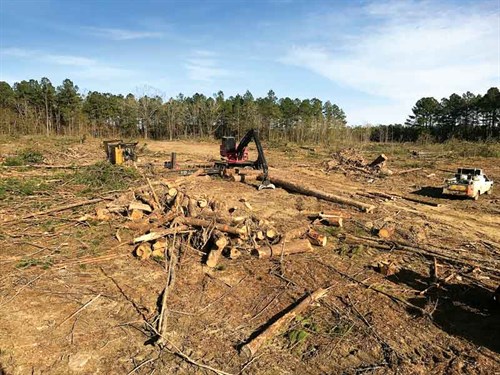
I spoke to the owner of the company about the differences between New Zealand and US, including health and safety and equipment. He took me down the interstate and showed me the next block to be felled. Here, the trees were located right next to the multi-lane highway. I said that it was going to be a pain having to shut the road down for the trees to be felled, and he gave me this confused look before saying: "Shut the road down? For what reason?"
I’m sure they are very good at what they do, but guess they haven’t heard or adhere to the ‘two-tree’ rule.
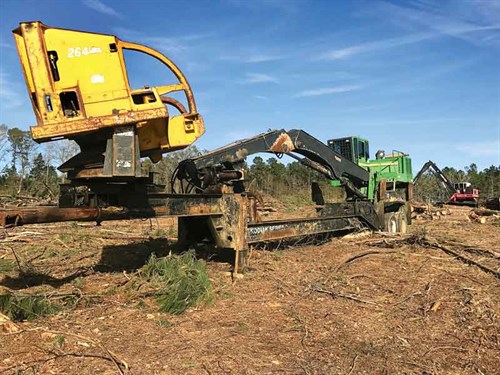
After returning to the skid site, I had a good look around their operation and tried out a few machines. I didn’t have much luck on one of their loaders, as every single control you could imagine was around the wrong way, such as slewing on the foot pedals and grapple controls on the slew joystick.
Shopping there was brilliant. Stores I visited included Walmart, Lowes, and Northern Tools + Equipment. I was surprised how cheap some things were and how everything you could imagine was on a shelf. Like if you blew a motor or a ram, you could just go down to the shop and buy a new one.
After the first week in Louisiana, we headed north to Indiana to see some other family. On our way, I saw a lot of the countryside and equipment on the 1000-mile (approx.) trip. It was -18°c when we arrived after a full 18-hour non-stop drive. The number of trucks I saw on those highways was incredible and don’t think I have ever seen so many trucks at once.
With the snowy weather, every man and his dog was out driving a snow plough, mounted to pretty much whatever they could get their hands on, from purpose-built trucks to tractors, loaders, utes, and everything in-between.

Salt is spread everywhere, so many vehicles rust out from underneath. From what I could see, there is no real warrant of fitness system over there—well nowhere near the standards of New Zealand. Our police would have a field day over there if they saw some of the things that are allowed to go on with vehicles and transportation. After spending a few days in the cold, we decided to head back to Louisiana. It seems there is always work going on the interstate highways no matter where you go, with massive cranes, excavators, and machinery as far as the eye can see.
Returning home
Arriving back in the south, I had the opportunity to check out more equipment around the region we were staying, and I managed to visit a few more places of interest to round out the three-week excursion.
Packing to return home was awkward, especially trying to fit all the tools I had purchased into my suitcases. After a return leg of 27 hours, we arrived back in Wellington, and it sure was good to be home driving on our side of the road again.
Everything back home felt so small and so slow compared to the rush of the US, but I was happy nonetheless. After a nice long sleep, I was back to work the next day, satisfied to be back in one of my Hitachi’s doing the business on a new subdivision project.
If anyone is thinking about traveling to the US, here are a few words of advice: Facebook works really well at connecting with other companies around the world. I met some interesting people over there, and it’s great to see a different side of things.
Not everyone will be nice, and sometimes you will just be treated like a nobody, but just take the good with the bad. Most people I found were nice and interested to hear my story.
No matter how much you know or think you know, it’s completely different over there. I thought I had an idea of how things were, but they weren’t what I expected.
Keep up to date in the industry by signing up to Deals on Wheels' free newsletter or liking us on Facebook.


.jpg)








